#dauphin Francis
Text






Francis icons :)
#reign#dauphin Francis#toby regbo#reign2013#reigntvshow#mary stuart#reign francis#icons#reign icons#dauphin Francis icons
44 notes
·
View notes
Text





Reign 2013-2017
Mary and Francis
#mary stuart#francis de valois#adelaide kane#toby regbo#frary#mary×francis#season1#reign#mary queen of scots#spotify#london symphony orchestra#scotland#dauphin#face expression#feathers#childhood#soulmates#reunited#fated#OTP#Spotify
56 notes
·
View notes
Text

YES! Lilianee IS the pushy big sister, because some people are just STUPID. There's nothing wrong with shooting your shot!
#lilianée de'pierrette d'amaryllis {la plus belle dauphine}#dash commentary [it's the latest gossip!]#(people are always too scared to approach francis if they're outside of the court)#(then lilianee comes in & baps them upside the head lol)
5 notes
·
View notes
Text
[Royal Ball but without the Box] | @fckin-bubbles-multi


“Hehe... she hasn’t yet, Ann had made her way to the ball already. I wanted to come see you first.” A shy smile crossed the blonde prince’s face. Maybe it wasn’t obvious, but he had been staring back at Miyuu. He has seen her in ballgowns & other fine dresses before, but this was one that he wanted to remember. The soft purple & white that matched his own.
“I’ve heard Lilianee hasn’t left you alone all day, her taste in clothes & colors never seems to dull. Tu as l'air céleste, princesse.” He can’t help but compliment her. Miyuu was always so beautiful, & he always thought so, even during the first day they met. “I hear she painted your nails as well, may I see?”
#fckinbubblesmulti#{Gloire Dauphin of Amaryllis} Dauphin Francis VIII#Interaction | Miyuu#『AU!Petite and Pretty Princesses』#『Only in lines of Imperfect Silver does Gold Shine ❤️ FrancisxMiyuu』
13 notes
·
View notes
Text

On 10th of February 1567 Henry Stewart, Lord Darnley, estranged husband of Mary, Queen of Scots, was murdered in Kirk O'Field.
The murder of Mary Stuart's second husband has fascinated historians for centuries, he was amn with no shorage of enemies, and was disliked by many, Mary was deeply unhappy with her husband, and is often cited as the one with most to gain, I personally do not think she was involved, but hey, I might be worng, here's more about the case.
On a Sunday morning in February 1567, Darnley lay sleeping on the upper floor of an Edinburgh house known as Kirk o' Field. For weeks he had rested there, convalescing from either smallpox or syphilis. Across the city, Queen Mary and their baby Prince James were safely ensconced at Holyrood House. Unknown to Darnley and perhaps unknown to Mary, someone had for some time been packing the cellars of Kirk o' Field with enough gunpowder to blow the structure to smithereens. And at around 2 am the building exploded, a blast heard and felt throughout Edinburgh.
According to historian Magnus Magnusson, nothing was left of the building. But, in an adjoining garden beside a pear tree, townsmen found Darnley's nightgown-clad corpse. Curiously, he appeared not to have been killed by the explosion but by strangulation. Magnusson speculates that Darnley had tried to escape just before the blast but had been intercepted by his murderer before he could flee.
Complying with royal protocol, Queen Mary observed 40 days of official mourning for her husband. But rumours circulated that Mary's widow weeds were woven discordantly with threads of insincerity. With Darnley's death, she had, in fact, become a widow for the second time. If her two-year marriage to Darnley had been brief, so too was her earlier marriage to the Dauphin of France. That union had lasted only two and a half years before the Dauphin, who had become King Francis II upon his father's death in 1559, died at age 16 from complications of an ear infection.
To understand the lead up to Mary's unhappiness you have to take a look at the circummstances leading up to her marriage and another murder.
Against the advice of her nobles and in spite of Queen Elizabeth's expressed displeasure, Mary wed Darnley in July 1565. But as predicted, the bridegroom's dissolute lifestyle soon angered her, causing her, of course, to second guess her decision. Most nights he roamed the streets of Edinburgh with low-life companions in search of women. He failed to participate in the business of the royal court.
Less than a year after the wedding, Darnley, unhinged by immature jealousy, became involved in the murder of David Rizzio, his wife's private secretary. Rizzio had come to Scotland from Italy some years previously on a diplomatic mission but remained at the Scottish court as a lute player, singer, and subsequently, as Mary's assistant. The more outraged Mary became over her husband's stupidity and lewd behaviour, the more she looked to Rizzio for consolation. At the time she and Rizzio were close, many Scottish Protestant lords were discontent with Mary's rule. Some of the nobles claimed that Rizzio was a secret agent of the Pope and had usurped their proper places beside the Queen. They easily cajoled the gullible Darnley into believing that Mary and Rizzio were sexual partners, an accusation that historians have found implausible. (At the time, Mary was six months pregnant with Darnley's child.) They persuaded him to take part in a plot to murder the Italian.
On the night of Saturday, 9th March 1566, Rizzio was dragged screaming from Queen Mary's side at her supper table in Holyrood House and stabbed some 56 times before life drained from his struggling limbs. It is unclear whether Darnley himself did the dragging or the stabbing or whether one of his henchmen performed the actual slaughter.
Amazingly, Mary forgave - or at least pretended to forgive - Darnley and cleverly managed to sever him from the group of treasonous nobles who had masterminded the Rizzio assassination. With Rizzio still fresh in the minds of the court, another threat to Darnley's fragile self-esteem soon took centre stage. James Hepburn, fourth Earl of Bothwell (a committed Protestant himself), rushed to Mary's aid in putting down a rebellion of Protestant conspirators.
Bothwell was Lord Admiral of Scotland, and although he possessed a reputation for bravery, he was also known to be lecherous, brutal, and power-hungry. Mary regarded him as her saviour, and he quickly became her most trusted advisor.
By the time Mary gave birth to Lord Darnley's son in June 1566, her husband had backslid into a life of debauchery, neglecting his royal duties and displaying a sullen resentment towards Mary's relationship with Bothwell. His disappearance from court prompted talk of a possible annulment of the royal marriage. But when the Queen learned he was seriously ill in Glasgow, she traveled to his bedside and later arranged for a horse litter to carry him back to Edinburgh to convalesce at Kirk o' Field. For months Mary had spoken of her husband with nothing but contempt, and the gesture was out of character.
While there is no definite answer to the question of who murdered Lord Darnley, most historians agree that Bothwell - with or without Mary's complicity - concocted the plot. A house explosion, which gave the crime such flagrant overtones and which scandalized all of Europe, was significant; a disintegrated building would cover tracks, making it impossible to prove anything. To be sure there was no direct evidence establishing Bothwell as the murderer, but for those associated with the royal court, it was only too easy to guess. Bothwell was a ruthless opportunist aiming at nothing less than the kingship of Scotland.
Typical of the era, the events following Darnley's murder were dramatic, ruthless, and bloody. Bothwell kidnapped, raped (so Mary claimed), and married the Queen. Predictably, within days of the wedding Mary was reduced to suicidal despair by Bothwell's abuse. Yet her willingness to marry Bothwell was not as absurd as it might seem. In spite of all she had been through, Mary remained politically astute. In the political power game playing out around her, she needed a strong ally to protect her from rebellious noblemen. Indeed, Bothwell notwithstanding, less than a year after Darnley's death the Scottish lords forced Mary to abdicate and flee to England. For the next two decades, she was held prisoner by Queen Elizabeth I and finally executed in England at Fotheringhay Castle in 1587.
There is no hint of any culpability on Queen Mary's part in regard to the Darnley murder in Sir Walter Scott's romantic epitaph, albeit written centuries later....
Thus died Queen Mary, aged a little above 44 years. She was eminent for beauty, for talents, and accomplishments, nor is there reason to doubt her natural goodness of heart, and courageous manliness of disposition. Yet she was in every sense one of the most unhappy Princesses that ever lived, from the moment she came into the world, in an hour of defeat and danger, to that in which a bloody and violent death closed weary captivity of 18 years.
The picture shows a depiction of the murder scene, for a breakdown of it, and more about the murder check out the link below from The National Archives. https://www.nationalarchives.gov.uk/education/resources/kirk-o-field/
21 notes
·
View notes
Text
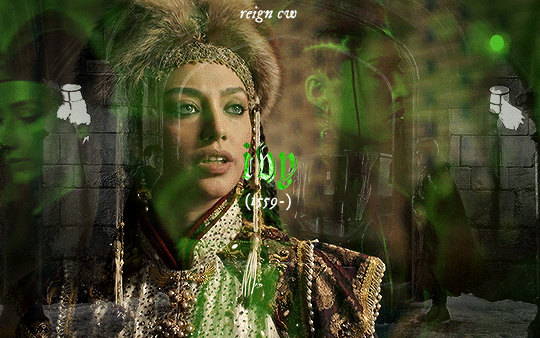
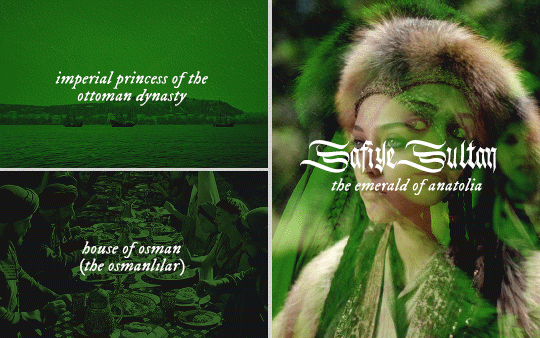



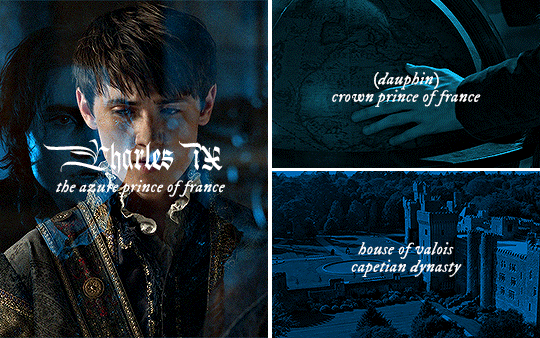
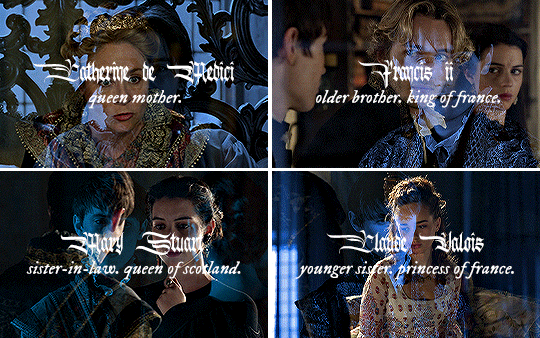

IVY 🍃 PROLOGUE
In the gilded courts of 16th-century France and the opulent palaces of the Ottoman Empire, two souls are bound by destiny, yet torn by the weight of their inheritance.
Charles Valois, the carefree Dauphin of France, never aspired to rule, favouring the pleasures of life over the responsibilities of the throne. But as his brother, King Francis II, lies on the brink of death, he must step into the role he never desired, navigating treacherous politics and a looming threat to his kingdom.
Safiye Sultan Hazretleri, an Ottoman princess trapped in a world of deceit and patriarchal oppression, hungers for power and freedom in a society that denies her both. Her dreams collide with her family's ruthless struggle for the Ottoman throne, where women are mere pawns.
In a tale of unlikely alliances, Charles and Safiye must navigate the treacherous waters of politics, love, and ambition to secure their legacies and reshape the destinies of their empires. As their worlds converge, they'll discover that true power doesn't always wear a crown, and freedom can be found where least expected. Will they find their way out of the shadows and into the light of their own destinies?
READ HERE → AO3 / WATTPAD
DEDICATIONS → it's been a while since i've made any edit for a story, or character but this one was really pressing on me and i was super excited to make it! may we all give a round of applause as for once, i didn't just make some gifs, but i actually started writing a fic 🎉 but i just wanted to share the sets that inspired me particularly:
ana martinez by @zoyazenik / house greyjoy by @emilykaldwen / josanna lannister and rob stark by @dragonsbone / alyse and aegon by @kingsroad / and jaenara velaryon by @fragilestorm <3
GENERAL TAGLIST → send me an ask, dm or reply if you want to be added! @godswood-girl @kingsroad @emilykaldwen @hiddenqveendom @fragilestorm @zoyazenik 🍓
#allaboutocs#ocappreciation#reign oc#ocfairygodmother#ochub#occentral#creations: oc#oc: safiye#creations: safiye#she is very dear2me i love a mad woman
41 notes
·
View notes
Text
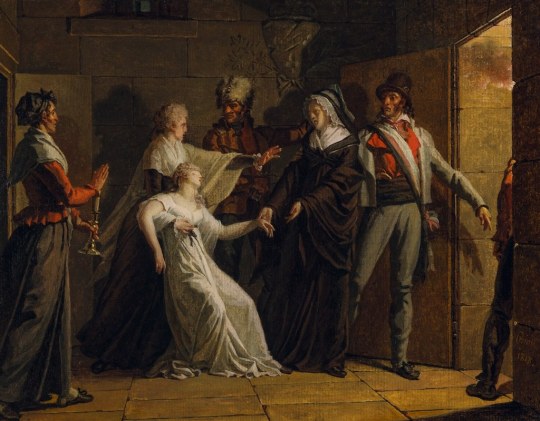
Jacques Augustin Pajou - Marie Antoinette séparée de sa famille au temple - 1818
Marie Antoinette (Marie Antoinette Josèphe Jeanne; 2 November 1755 – 16 October 1793) was the last queen of France prior to the French Revolution. She was born an archduchess of Austria, and was the penultimate child and youngest daughter of Empress Maria Theresa and Emperor Francis I. She became dauphine of France in May 1770 at age 14 upon her marriage to Louis-Auguste, heir apparent to the French throne. On 10 May 1774, her husband ascended the throne as Louis XVI and she became queen.
As queen, Marie Antoinette became increasingly unpopular among the people; the French libelles accused her of being profligate, promiscuous, having illegitimate children, and harboring sympathies for France's perceived enemies, including her native Austria. She was falsely accused in the Affair of the Diamond Necklace, but the accusations damaged her reputation further. During the French Revolution, she became known as Madame Déficit because the country's financial crisis was blamed on her lavish spending and her opposition to social and financial reforms proposed by Anne Robert Jacques Turgot and Jacques Necker.
Several events were linked to Marie Antoinette during the Revolution after the government placed the royal family under house arrest in the Tuileries Palace in October 1789. The June 1791 attempted flight to Varennes and her role in the War of the First Coalition were immensely damaging to her image among French citizens. On 10 August 1792, the attack on the Tuileries forced the royal family to take refuge at the Assembly, and they were imprisoned in the Temple Prison on 13 August. On 21 September 1792, the monarchy was abolished. Louis XVI was executed by guillotine on 21 January 1793. Marie Antoinette's trial began on 14 October 1793; she was convicted two days later by the Revolutionary Tribunal of high treason and executed, also by guillotine, at the Place de la Révolution.
Jacques-Augustin-Catherine Pajou (27 August 1766, Paris - 28 November 1828, Paris) was a French painter in the Classical style.
10 notes
·
View notes
Text


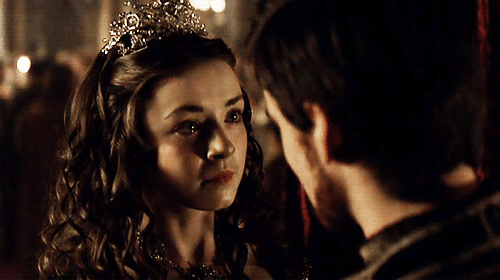

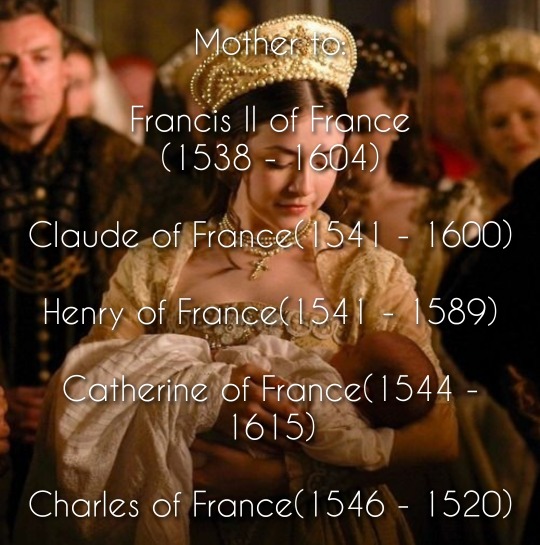

A happier life for Henry VIII's children. Part: 1.
Mary was the first surviving child of King Henry VIII of England from his first marriage to the Spanish princess Catherine of Aragon. The princess knew that she was not her parents' only child - all of her siblings died shortly after birth. The birth of a living and healthy child was a great happiness for King Henry and Queen Catherine, even though the child was a girl. That is why she became the king's favorite daughter. When she was 12 years old, her father decided to divorce her mother. Catherine did not resist the king's decision for a long time, but accepted the inevitable and agreed to the divorce with favorable terms. For this, the king, as promised, retained for Mary the status of princess and allowed the former spouse to communicate with his daughter. After the divorce for Mary little changed, she continued to grow up in the love of her father and mother, often visited both parents. The princess did not like her father's second wife, but did not show it. Anne Boleyn did not meet Henry's expectations, so he sent her to a convent under strict supervision. The king also wanted to declare Princess Elizabeth illegitimate, but Mary stood up for her sister and convinced her father not to do so. Soon the king married Jane Seymour, and a year after the wedding she gave him a long-awaited son, whom the happy father named Edward. In honor of this joyous event, Henry organized a grand feast that lasted for a whole week. In the same year, Princess Mary married Prince Henry, heir to the French throne. Before meeting his future wife, the dauphin had a love affair with Diana de Poitiers, but when he first saw his betrothed, he fell madly in love with her. Henry immediately severed all ties with Diana and was faithful to his wife until his death. The marriage of Mary and Henry turned out to be very happy. They had five children:
Francis II of France(1538 - 1604). Nicknamed "The Peacemaker" for the foreign policy calm during his reign. During his reign, France did not wage a single war. Husband of Helena of Austria, they had a good relationship. In marriage 7 children were born: Mary, Louis XIII, Anne, Henry, Christina, Philip, Gaston.
Claude of France(1541 - 1600). Queen of Spain. In 1556 she became the wife of Philip II. The spouses loved each other despite the big difference in age. They had 5 children: Philip III, Isabella, Joanna, Ferdinand, Diego.
Henry of France(1541 - 1589). Duke of Orleans. Was a favorite son for his mother, as from a young age showed a keen interest in religion. And when he became older he decided to devote his life to the service of God. He was not married and had no children.
Catherine of France(1544 - 1615). Archduchess of Austria. Favorite sister of Francis II. Was the second wife of Ferdinand II of Austria. The spouses did not love each other, but respected each other. In marriage 3 daughters were born: Anne, Mary, Eleanor. After the death of her husband returned to her homeland.
Charles of France(1546 - 1620). Duke of Angoulême. Because of his dissolute lifestyle he had conflicts with his mother. He married his cousin Jane, daughter of King Edward VI of England. The married life of Charles and Jane was not happy, because of his constant cheating. The marriage produced 4 children: Gedeon, Charlotte, Michelle and Cesar.
While in France, she did not forget about her family and maintained a close correspondence not only with her parents, but also with her second stepmother, because of the warm and close relationship between them. Before leaving, Mary and Jane had great difficulty convincing the king to bring Elizabeth to the palace so that she would not feel lonely. Henry initially had no paternal feelings for his second daughter, but was later able to develop a warmth for the girl. In 1540, Dauphine learned that her mother had died. She could not come to her funeral, as she was pregnant with her second child, but due to severe stress she had a miscarriage. Because of these events, the princess fell into depression, she did not leave her chambers and hardly ate anything. Her husband was with her all this time and provided as much support as possible, but when he realized that he could not cope, he invited Jane to help. She couldn't stay away and convinced Henry to let her go to Mary. After a few months, Mary recovered and all three returned to England. The king greeted his wife, daughter and son-in-law warmly. And the princess was finally able to honor her mother. She also spent time with her brother and sister because she missed them during the 6 years of absence. When Mary returned to France, she was already pregnant with her third child, and nine months later she gave birth to twins. Five years passed.During this time, Mary and Henry became king and queen of France and had two more children. They successfully ruled the kingdom. Shortly before his death, Henry 8 appointed his eldest daughter as regent under his young son. The queen excelled in her duties as regent and pursued a mild policy toward her subjects. When she realized that Edward was already capable of ruling on his own, she placed the power in his hands and returned to France. In 1559, King Henry of France fell from his horse while hunting and died. Mary mourned the death of her beloved husband for a long time and wore mourning for him for the rest of her life. She warmly remembered the 22 happy years they gave to each other and loved to tell her grandchildren about it. Mary often came to visit her brother, and the two developed a warm relationship. The dowager queen of France died in 1580. She was buried next to her husband Henry II in the Abbey of Saint-Denis.
Source:
Pinterest: Dinastia Tudor & Reyes Católicos, Bit_na
Tumblr: the borgias ITALIA
#history#royal family#royalty#history au#au#royal#henryviii#the tudors#british royal family#16th century#catherine of aragon#anne boleyn#jane seymour#marytudor#house of tudor#tudor dynasty#tudor england
10 notes
·
View notes
Note
Viscaria & White Camellia - Francis, whose been wanting to ask Sakura for a dance
Send my muse some flowers and they'll react to their meaning @liroyalty
Viscaria — “Will you dance with me?”
White Camellia — "You’re adorable.”

The flowers made him blink. When Francis presented them to him he looked around at first, as if the Dauphin had meant to present the flowers to anyone else. He smiled down at the blooms, taking a deep breath as if to steady himself for the next stage, but when he looked up at Francis, it was with a smile. "I would love to, Francis-ouji..."
Being far away from his father's eyes, and far away from the Golden Court, perhaps he could afford this one indulgment.
8 notes
·
View notes
Text
My Sister's Prince (1st Version) Chapter Three l.
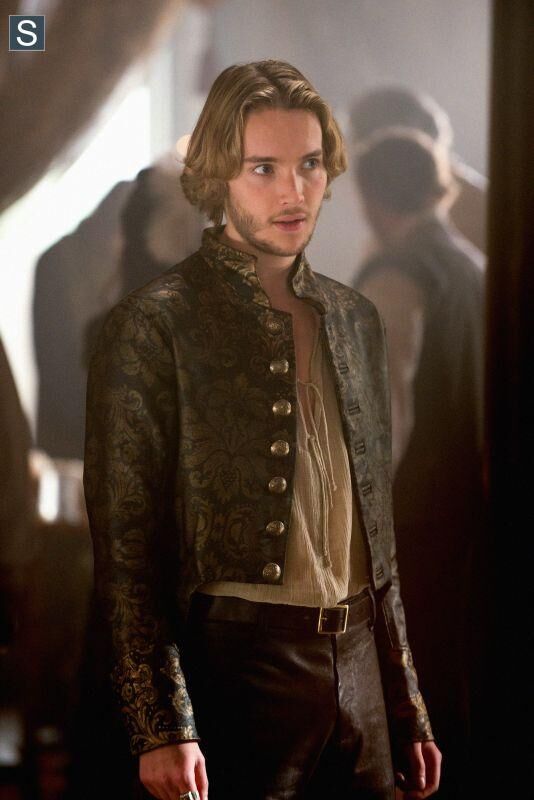
The next day, you find yourself sitting on a blanket under a tree, reading a book. When you see the shadow of a figure, sit beside you.
You: Whatever trouble I'm in, just say it.
Mother: Why would you think you’re in trouble?
You: Why do you think I think I'm in trouble?
Mother: That's not funny, Y/N. I wanted to check on you. Your sister and I have been so busy that you and I haven't had a chance to catch up.
You: My bed chamber is nice, I like the food and all the suitors want to marry wall flowers. There you're caught up.
Mother: You haven't met any suitors yet.
You: Why waste time when you already know?
Mother: Speaking of these wallflower marrying suitors. We've all been invited to attend Princess Elizabeth's wedding tonight.
You: Tonight?
Mother: Yes, I think it's a wonderful opportunity for Mary and the Dauphin to get to know each other better.
You: Here it comes.
Mother: And for you to meet some potential husbands.
You: And there it is. Mother, I don't want any of those men. They want to marry statues who agree with everything they say, worship the ground they walk on and look the other way when they're being unfaithful.
She stands up.
Mother: Why do you always fight me on this?
You stand up.
You: Why do you want your daughters to marry men who will never love them?
Mother: It's not about love.
You: Perhaps it should be.
Mother: You need to stop reading fairy tales. They're distorting your vision of reality.
And with that, she walks away. You go inside and walk down the hallway with your book still clenched in your hand. You barely look up. A voice calls out to you.
Francis: Y/N?
You: Not now your grace.
Francis: I need to talk to you.
You: Whatever it is, leave it be, I beg of you.
You continue walking.
Bash: Any luck?
Francis: No, she completely ignored me.
Bash: Maybe she was distracted.
Francis: Maybe.
Later that afternoon, you and Mary are getting ready for Elizabeth's wedding. You're taking a bath while your sister is trying to make decisions.
Mary: Which dress do you think I should wear tonight?
You: Any dress you want.
Mary: It can't just be any dress. It has to be something that says I belong here. What dress are you planning to wear?
You: One of my black ones.
Mary: Black?
You: Yes. To help the princess mourn the loss of her independence.
Mary: You can't wear black.
You: I was kidding, Mary.
She sighs in relief.
You: Honesty, I don't know what I'm going to wear. We've never been to a royal wedding before.
Mary: No, we haven't. How do you think I should wear my hair, up or down?
You: Down. It softens your whole look.
She looks in the mirror.
Mary: Yes, I think so, too. You know wearing black might not be such a bad idea.
You: You can't be serious?
Mary: Why not? It's different, and it's daring.
You: You'll become the laughing stock of the entire court.
Mary: Or I earn their respect. And Francis's favor.
You: It's your decision.
A moment of silence.
You: Everything's so different here.
Mary: Yes, I know.
You: Aren't you scared?
Mary: Of what?
You: I don't know. What if the Dauphin doesn't choose you? What if he decides to do this all over again with someone else? You know how many girls he's rejected in your position.
Mary: Yes, I know.
You: Doesn't it trouble you?
Mary: Yes. It does.
Authors Note: This chapter is a bit of a filler, and I don't know what I'm going to do, but I wanted Elizabeth's wedding to take up most of chapter four, maybe I'll add some things to make it longer than the first three. Have the reader have a longer dialogue with Francis.
9 notes
·
View notes
Text
My Sister's Prince (1st Version)

Setting: Your mother and sister Mary are frantically running around the estate trying to get ready to leave for French Court with high hopes that the Dauphin will choose Mary to be his wife.
Mother: What about this one?
Mary: It's blue.
Mother: But Francis loves blue.
Mary: Which means it's been worn by all the other girls the Dauphin has considered marrying.
Mother: (impressed) Very good, Mary.
They finally notice that you're not there.
Mother: Where's Y/N?
Mary: Probably sitting up in a tree somewhere.
Mother: She has too much spirit for a girl of her station.
Mary: Why does she have to go with us? Her "spirit" will just get in the way.
What if the Dauphin decides he doesn't want to marry me because she's too much trouble.
Mother: My child. You are worried over nothing. Besides, I want her there to support you. And hopefully, while we're there, she'll also find a suitable husband. Perhaps the right man will help her settle down a little and start thinking about her future.
Mary: She'll always be wild. No man is going to change that.
Skip to you.
You're laying in a field, wearing a crown made of flowers. Enjoying the sunshine and the cool breeze.
Mary: Should have known I'd find you out here, getting fithy.
You: What do you want, Mary?
Mary: We'll be leaving soon. Mother wants you bathed and dressed.
You: I'm already bathed and dressed.
Mary: And it wouldn't kill you to act like a proper lady while we're at court either.
You stand up.
You: I live for no one therfore I live to impress no one.
Mary: Can you at least try to pretend you care about what's important to us?
You: Fine. I suppose it wouldn't hurt me to be a little more diplomatic while we're at court.
Mary: Thank you.
Skip
After a quick bath, your servants help you dress. Your mother comes in to check on you.
Mother: Much better.
You: You mean I look like a proper lady now? I still don't see why I have to go.
Mother: Because it's a huge opportunity for Mary.
You: For Mary.
Mother: You should be there to support her.
You: Can't I just support Mary from here.
Mother: Give it a chance, my love. You might even like Court.
You: I'm not holding my breath, Mother.
Mother: (sigh) Go wait in the carriage. You're Sister, and I will be there in a moment.
While on your way to Court, your mother keeps reminding you of your manners.
Mother: We are guests of King Henry's, and I expect you to behave like a respectable young lady. Y/N?....Y/N? Are you listening to me?
You: Yes, Mother.
Once you've arrived, you're welcomed by King Henry, Queen Catherine, and the Dauphin. Francis and your sister listen intently to your parents' conversation while you look off towards the nobles who are outside enjoying the warm weather.
You see a young couple holding hands, laughing, and whispering secrets to each other. The sweetness of the moment makes you smile to yourself. Francis notices and looks in the same direction, then back to find you still enchanted by the young couple.
Catherine: Henry, why don't we let our guests get settled.
Henry: Yes, of course.
Henry and Catherine walk back towards the castle. Your sister and Francis are behind them. You and your mother are following in the back. You can't help but stare at the large building in front of you, trying to gather your thoughts
Mother: Y/N Are you alright?
You: It's nothing, Mother. Nothing.
#fanfic#fanfiction#toby regbo#tobyregbo#Francis Valois#reign#reign cw#Francis#mary stuart#mary queen of scots#x reader
18 notes
·
View notes
Text



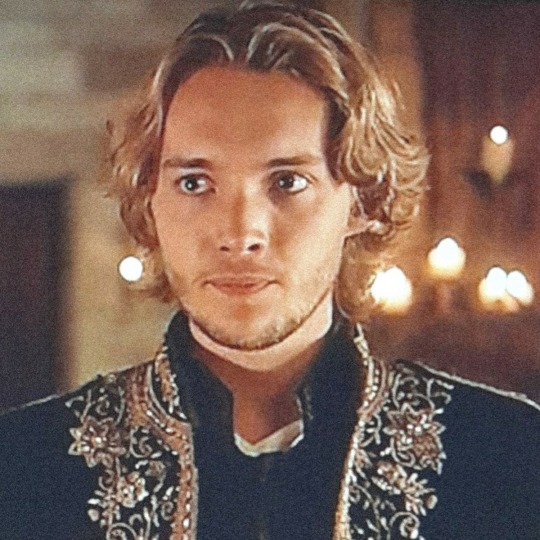

Reign 2013-17

Toby Finn Regbo as Francis Valois


#francis de valois#toby regbo#mary stuart#adelaide kane#frary#mary×francis#season1#reign#face expression#muoio per te#he loves her so much#engagement#dauphin#relentless#love#fraryOTP#feelings#jealousy#france#portugal#scotland#queen of scots#love and duty#pain#Spotify
13 notes
·
View notes
Note
👍 also for Sakura and Francis because reasons
SEND 👍 FOR A RANDOM HEADCANON I HAVE ABOUT OUR MUSES.

I'll be real, I have nothing for them, because these sorry shits act like they are straight up allergic to each other. But I can give you one if I butt in Lilianee. She sends flowers to Sakura on the regular on Francis's behalf.
And by 'behalf' I mean, he has no fucking idea she's doing this. Francis & Sakura very much have the same mindset of 'Oh, the other party doesn't want me'. Francis sees the shy wallflower Sakura is, & with knowing how things are with himself, being a very popular prince from a very popular court, that gets him surround by more people then Sakura could ever handle in a week let alone a day, from a luxurious, overly busy & judgmental court, knows Sakura would never choose to be with him. And Sakura is Sakura, he sees that veil around Francis, that picture prefect prince, & then looks at himself & goes 'never in a thousand live will I ever be good enough or wanted by that man. he could have anyone, why would be pick me?' & puts in all the distance he can to let Francis 'thrive'.
Only Lilianee sees how they both actually are, sees the pinning, goes 'fuck you both, I'm bringing you together! 😤' So she is always sending flowers to keep Francis in Sakura's mind, & trying to stage events & situations where they will both be in the same place & see each other(though in the case of the later, she needs outside help, so can't be credited to Lilianee alone).
#akumanoken#francis d'amaryllis viii {gloire dauphin}#lilianée de'pierrette d'amaryllis {la plus belle dauphine}
3 notes
·
View notes
Text

Marie Antoinette with her children Louis Joseph, Dauphin of France (22 October 1781 – 4 June 1789), and Marie Thérèse Charlotte, Madame Royale (19 December 1778 – 19 October 1851).
Portrait by Charles Le Clercq, 1781.
—
Marie Antoinette (Marie Antoinette Josèphe Jeanne; 2 November 1755 – 16 October 1793) was the last queen of France before the French Revolution.
She was born an archduchess of Austria. She was the penultimate child and youngest daughter of Empress Maria Theresa and Emperor Francis I.
She became Dauphine of France in May 1770 at age 14 upon her marriage to Louis-Auguste, heir apparent to the French throne.
On 10 May 1774, her husband ascended the throne as Louis XVI and she became queen.
#Marie Antoinette#Louis-Auguste#King Louis XVI#Louis Joseph the Dauphin#Marie Thérèse#House of Habsburg-Lorraine#House of Bourbon#French Revolution
18 notes
·
View notes
Text

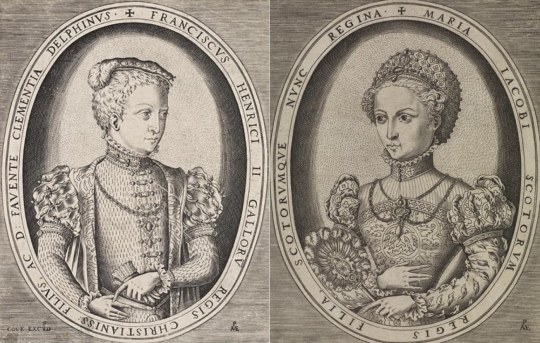
24th April 1558 saw Mary Queen of Scots marry the French Dauphin, François de Valois, at Notre Dame in Paris.
In 1548 five-year-old Mary was sent to her grandmother Antoinette of Guise in France, where her Scottish entourage was considered appallingly barbarous and swiftly got rid of, she was then brought up as a Catholic Frenchwoman.
French became her first language, she always called herself Marie Stuart and she loved dancing and hunting. She grew up delightfully charming, graceful and attractive, the French fell in love with her and Henry II of France resolved to marry her to his son and heir, the sickly dauphin Francis.
A marriage treaty was signed with the Scots, which provided that Scotland and France should eventually be united under Mary and Francis as one kingdom. There were also secret agreements, which the youthful and inexperienced Mary signed, that would have made Scotland a mere adjunct of France.
Mary was fifteen and Francis fourteen when they were married on this day in 1558, with spectacular pageantry and magnificence in the cathedral of Notre Dame, Paris, by the Cardinal Archbishop of Rouen, in the presence of Henry II, Queen Catherine de’ Medici, the princes and princesses of the blood and a glittering throng of cardinals and nobles.
The Duke of Guise was master of ceremonies. Mary in a white dress with a long train borne by two young girls, a diamond necklace and a golden coronet studded with jewels, was described by the courtier Pierre de Brantôme as ‘"a hundred times more beautiful than a goddess of heaven … her person alone was worth a kingdom.’ The wedding was followed by a procession past excited crowds in the Paris streets to a grand banquet in the Palais de Justice with dancing far into the night.
Mary became Queen of France when Henry II died the following year, but Francis died prematurely in 1560. Whether the marriage was ever consummated is uncertain. Mary’s mother also died in 1560 and it suited the French to send her back to Scotland and claim that she was the rightful queen of England as well.
She would eventually meet political and romantic disaster in Scotland, enduring years of imprisonment in England where, too dangerous a threat to Elizabeth’s throne, Mary was executed in 1587, at the age of forty-six.
16 notes
·
View notes
Text
Day 7: Charlotte of Savoy
Charlotte of Savoy
Born: c. 1441/3
Died: 1 December 1483
Parents: Louis, Duke of Savoy and Anne of Cyprus
Queen of France
Children: Louis (18 October 1458 – 1460)
Joachim (15 July 1459 – 29 November 1459)
Louise (born and died in 1460)
Anne (3 April 1461 − 14 November 1522) - the wife of Peter II, Duke of Bourbon
Joan (23 April 1464 – 4 February 1505) - the wife of Louis XII, King of France
Louis (born and died on 4 December 1466)
Charles VIII of France (30 June 1470 – 8 April 1498)
Francis, Duke of Berry (3 September 1472 – November 1473)
Charlotte of Savoy was one of the 19 children of Louis, Duke of Savoy and Anne of Cyprus.
On 11 March 1443, the one year old Charlotte was betrothed to Frederick of Saxony, son of Frederick II, Elector of Saxony, but the arrangement was annulled for unknown reasons.
Almost 8 years later, on 14 February 1451, Charlotte married Louis, Dauphin of France,eldest son of Charles VII of France and Marie of Anjou.
Charlotte was 9 years old and Louis was 27.
Louis' previous wife died childless in 1445.
The marriage took place without the King of France’s consent.
Upon the wedding, Charlotte became Dauphine of France.
When Louis received news of his succession to the throne of France, he abandoned Charlotte at the Burgundian court.
On 22 July 1461 Charlotte became the Queen of France.
Soon she became ill and was close to death by August 1462. She recovered but despite that her health remained weakened.
Louis XI kept his wife away from court at the Château of Amboise along with her household.
Charlotte mostly spent her days with her sisters and courtiers, playing chess, marbles, doing needlework, praying, doing her religious duties and supervising her daughters' education.
On very few occasions, she was asked to perform her ceremonial duties as queen such as greeting foreign dignitaries.
Charlotte served as regent of France in September 1465.
Louis died on 30 August 1483 and was succeeded by their son Charles VIII.
He did not appoint a regent instead left instructions for a royal council to govern during the minority of Charles. Charlotte, Duke Jean de Bourbon II and their two sons-in-law Louis d'Orleans (married to their daughter Jeanne) and Peter II, Duke of Bourbon (married to their daughter Anne) were made members of the council although in practice their daughter Anne took over as regent.
A few months after her husband’s death, Charlotte died on 1 December 1483 in Amboise.
They are buried together in the Basilica of Our Lady, Cléry in Cléry-Saint-André (Loiret) in the arrondissement of Orléans.
Charlotte was interested in literature, her manuscripts were the foundation of the Bibliothèque Nationale de France. She was regarded as virtuous.
#1400s#15th century#women history#women in history#queen of france#kingdom of france#medieval#medieval history#savoy#dauphin#french history
2 notes
·
View notes